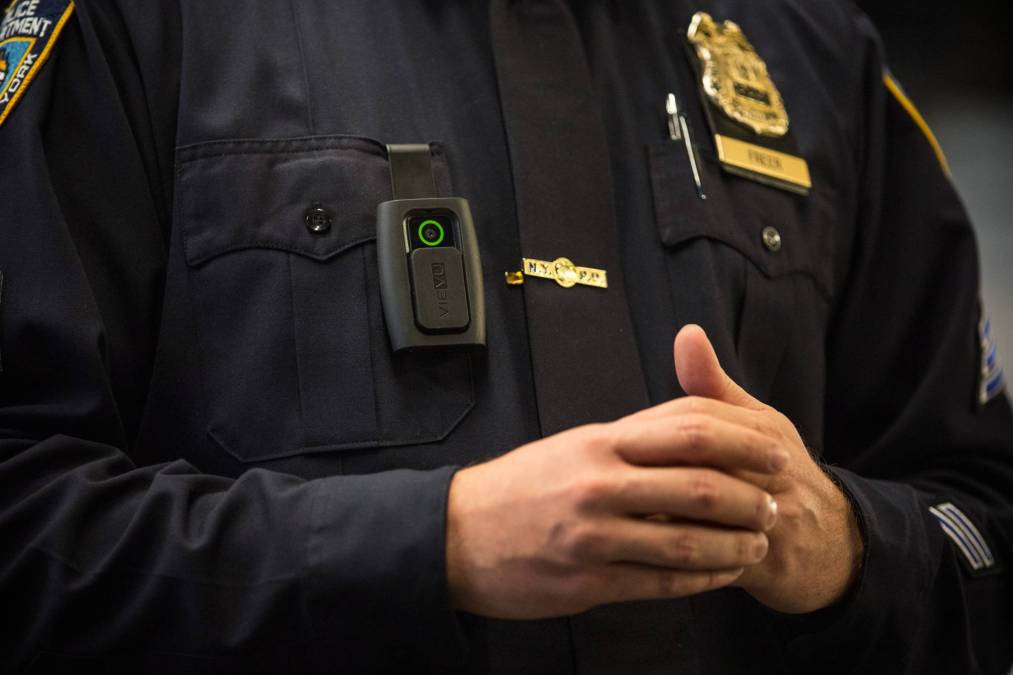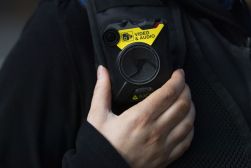Justice Department funds body-worn cameras for small-town, rural, tribal police

The Justice Department this week announced the release of $7.65 million to fund the deployment of body-worn cameras in small, rural or tribal law enforcement agencies.
The department said the funding will be available through a competitive grant program to any law enforcement agency with 50 or fewer full-time sworn personnel, agencies within non-urban counties and federally recognized tribal agencies. Attorney General Merrick Garland said the funding is intended to provide law enforcement with “valuable resources to increase accountability and build trust.”
The Justice Department’s Bureau of Justice Assistance is set to distribute the funding as it collects applications through an online portal that Kristen Mahoney, the bureau’s acting director, said will “streamline” the grant process, which is to be administered by Justice and Security Strategies Inc., a law-enforcement consulting firm. Applications are due by Aug. 31.
Police agencies have adopted body-worn cameras more rapidly in recent years, particularly since the May 2020 murder of George Floyd by Derek Chauvin, a Minneapolis police officer, that beamed a national spotlight on police conduct. In addition to South Carolina, which already had a statewide mandate for the use of body-worn cameras, six additional states have since Floyd’s killing implemented laws requiring police use the devices — Colorado, Connecticut, Illinois, Maryland, New Jersey and New Mexico — according to the National Conference of State Legislatures.
On Thursday, the Indiana State Police announced it would launch a $15 million body-worn camera program following a mandate by Gov. Eric Holcomb last summer in which he called for solutions addressing “equity and inclusion” in his state. That announcement was accompanied by the creation of a new role called the chief equity, inclusion and opportunity officer.
“What I’ve laid out today are actions in a broad effort to make sure Indiana is a place where every Hoosier has an equal opportunity and access to achieve our founders’ vision of life, liberty and the pursuit of happiness,” Holcomb said last August. “Achieving that vision requires we address root causes and remove barriers that have built up for centuries.”
Connecting rural communities to use the cameras is expected to be one of Indiana’s biggest challenges under the new program, ISP Superintendent Doug Carter told local news outlets this week. The department said it expects to connect nearly 800 cameras by the end of August.
“This has been a project in the making for quite some time now,” Carter said. “Policing in America changed over the last 16 months.”
For law enforcement agencies that don’t qualify for the Justice Department’s new grant program, it pointed to another open solicitation: a $27.5 million program that’s set to close applications on Monday.
Though many on both sides of the badge have pinned hopes on body-worn cameras reducing the widespread mistrust of law enforcement and mitigating improper police behavior, results on both fronts have been equivocal. An April report found body-worn cameras “can be effective” at reducing complaints and curb police use of force, but only if agencies have a “strong accountability infrastructure” — training, policies and oversight.
But the report found these elements are often absent at police agencies, where officers sometimes don’t activate their cameras or officers aren’t held accountable for using the devices inconsistently. One solution suggested by the report is for agencies to use a feature that automatically switches on cameras under certain conditions.






